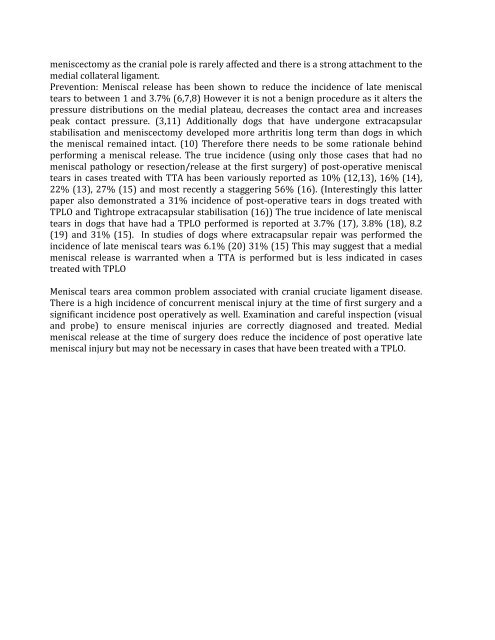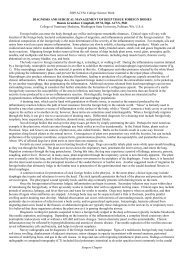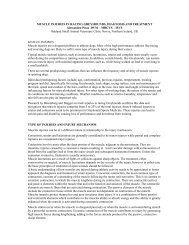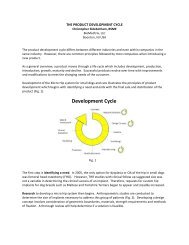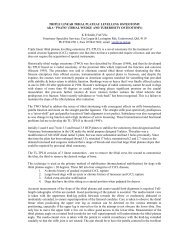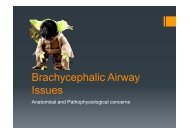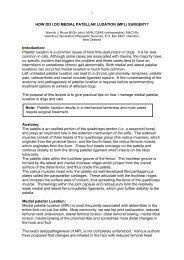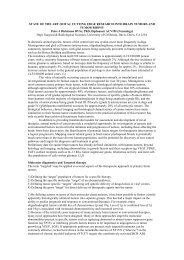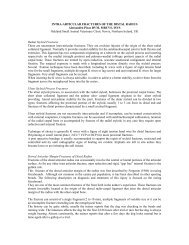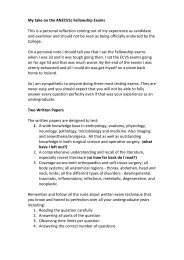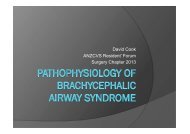Marchevsky Meniscal Injury
Marchevsky Meniscal Injury
Marchevsky Meniscal Injury
Create successful ePaper yourself
Turn your PDF publications into a flip-book with our unique Google optimized e-Paper software.
meniscectomy as the cranial pole is rarely affected and there is a strong attachment to the <br />
medial collateral ligament. <br />
Prevention: <strong>Meniscal</strong> release has been shown to reduce the incidence of late meniscal <br />
tears to between 1 and 3.7% (6,7,8) However it is not a benign procedure as it alters the <br />
pressure distributions on the medial plateau, decreases the contact area and increases <br />
peak contact pressure. (3,11) Additionally dogs that have undergone extracapsular <br />
stabilisation and meniscectomy developed more arthritis long term than dogs in which <br />
the meniscal remained intact. (10) Therefore there needs to be some rationale behind <br />
performing a meniscal release. The true incidence (using only those cases that had no <br />
meniscal pathology or resection/release at the first surgery) of post-‐operative meniscal <br />
tears in cases treated with TTA has been variously reported as 10% (12,13), 16% (14), <br />
22% (13), 27% (15) and most recently a staggering 56% (16). (Interestingly this latter <br />
paper also demonstrated a 31% incidence of post-‐operative tears in dogs treated with <br />
TPLO and Tightrope extracapsular stabilisation (16)) The true incidence of late meniscal <br />
tears in dogs that have had a TPLO performed is reported at 3.7% (17), 3.8% (18), 8.2 <br />
(19) and 31% (15). In studies of dogs where extracapsular repair was performed the <br />
incidence of late meniscal tears was 6.1% (20) 31% (15) This may suggest that a medial <br />
meniscal release is warranted when a TTA is performed but is less indicated in cases <br />
treated with TPLO <br />
<strong>Meniscal</strong> tears area common problem associated with cranial cruciate ligament disease. <br />
There is a high incidence of concurrent meniscal injury at the time of first surgery and a <br />
significant incidence post operatively as well. Examination and careful inspection (visual <br />
and probe) to ensure meniscal injuries are correctly diagnosed and treated. Medial <br />
meniscal release at the time of surgery does reduce the incidence of post operative late <br />
meniscal injury but may not be necessary in cases that have been treated with a TPLO.


